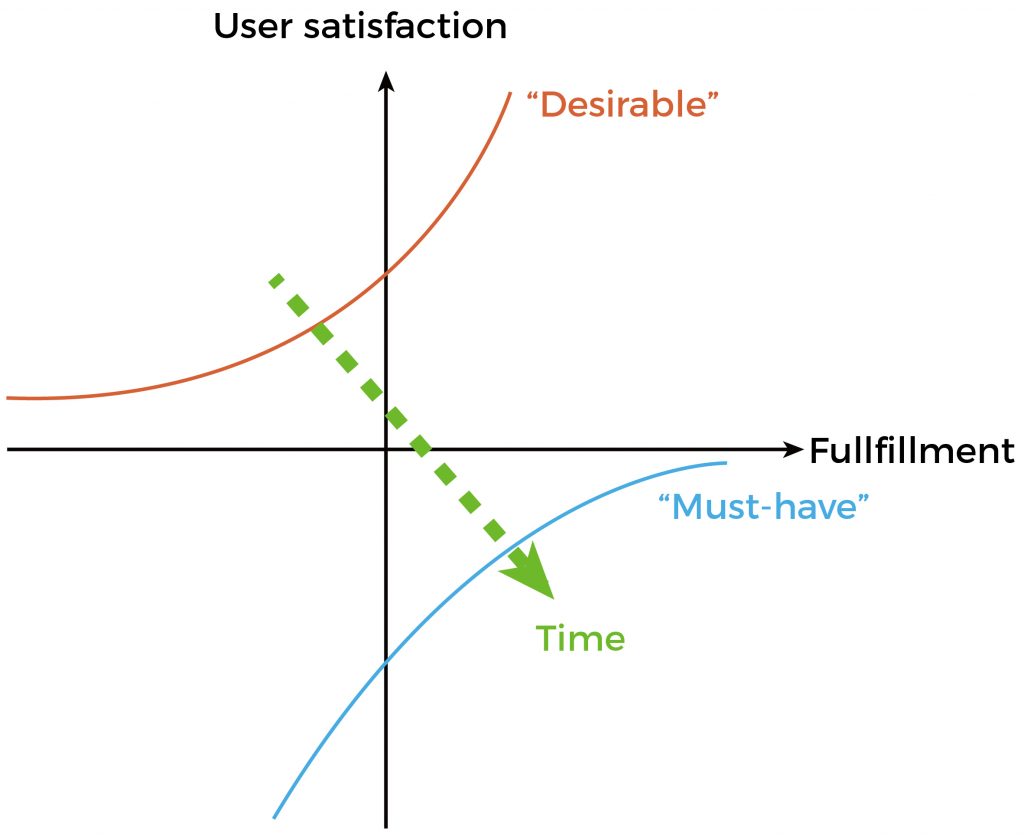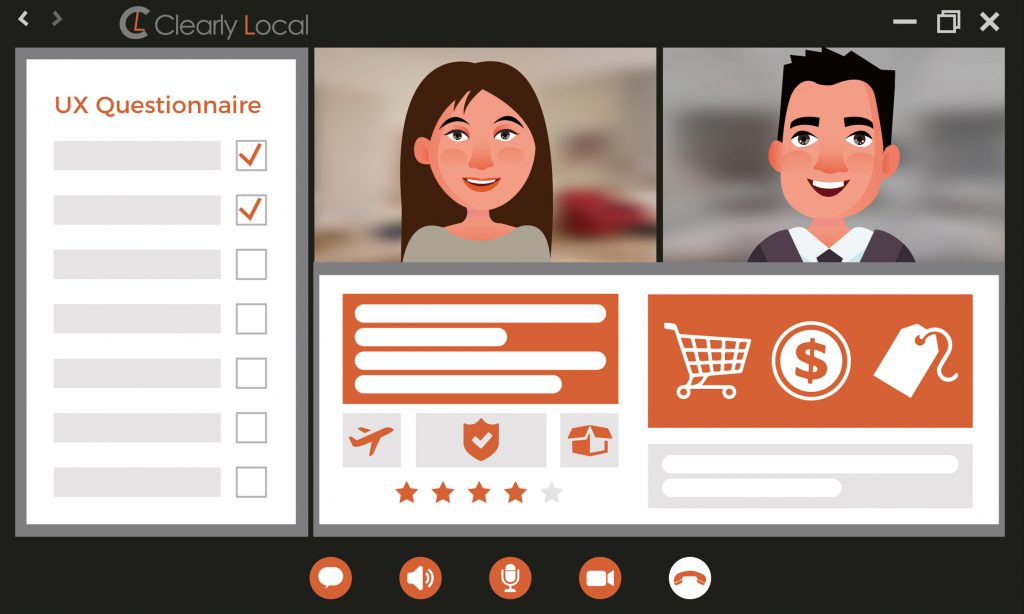You know your multilingual content is good — it’s consistent, accurate, and error-free. You followed a professional localization process, from kickoff meetings to defining standards to linguistic testing. You’ve launched in multiple regions, and customers are showing interest.
But something is missing. Your brand’s CR (or CAR, CCR, RPR, or whatever sales KPI you’ve chosen) isn’t meeting your team’s expectations — in other words, your customers aren’t perceiving your product or platform as well as you hoped. As predicted by the Kano model, expectations toward user experience (UX) shift over time: What was previously considered a desirable feature is now a must-have. With the wealth of localization technologies and best practices available today, this applies more than ever to your multilingual content.

The Kano model for UX predicts how user expectations progress over time.
How did you end up in this position? Well, it turns out that high-quality localization is only one part of successful multilingual content. You also need good UX across all your target languages. Here’s why:
- Quality is now the bare minimum. Every reputable localization provider is expected to deliver error-free (or at least near error-free) content these days. Well-executed localization alone won’t make you stand out.
- Users’ options keep multiplying. As more players enter the market, potential customers have a massive array of content to sort through. It’s in your power to make decisions easy instead of overwhelming.
- The competition is fiercer than ever. Thanks to globalization, virtually any company can access any market. To attract and retain customers, the experience you offer needs to outshine that of your competitors.
Taming the Multi-Headed Beast of Multilingual UX
Multilingual UX can intimidate even the toughest industry veterans. UX is a complex topic even when you’re dealing with only one language. In multilingual contexts, the process must take place individually for each language because UX preferences vary from language to language.
For example, Chinese speakers may be most comfortable with information-dense pages, while English speakers often prefer more minimalist layouts. As another example, users from risk-averse cultures may avoid platforms that request payment information before allowing users to explore what’s on offer.
Indeed, principles that make for optimal UX in one language might yield terrible results in another. Ideally, every user should feel like the experience was designed just for their language community.
To ease the burden and ensure the best results, companies are turning to localization providers for help rolling out UX consulting projects. At Clearly Local, we bring a wealth of UX expertise to such partnerships. This expertise goes beyond translation and linguistic testing, extending into customer behavior and psychology. Our UX optimization experts offer decades of customer-facing experience, a toolkit of effective methodology, and a critical mindset — all underpinned by a passion for great customer experience.
What Makes a Successful Multilingual UX Project?
Working hand in hand with our clients, our multilingual UX experts follow an effective and efficient process.
Identifying Pain Points
The first step to improving UX is understanding precisely what the problems are. If you fail to identify them accurately, your optimization efforts may be wasted. At CL, we identify these pain points based on two main sources:
- The goals specified by relevant stakeholders — that is, the company, department, team, or other involved parties. These goals may be defined in various terms, such as KPIs, OKR, performance requirements, or expectations for customer journey. For instance, perhaps your average order value (AOV) is too low, or users are leaving without spending much time on your app.
- Discovery interviews that CL runs to collect sentiment information from stakeholders and define the pain points.
Once we have identified the pain points, we move on to collecting user feedback.
Finding Out How Users Feel
Naturally, if you want the most valuable insight into user experience, you ask your users for their opinions. To elicit high-quality feedback from users, we recruit interviewees depending on our clients’ requirements for familiarity with the relevant product or platform. The interviewee pool can include anyone from experienced users to brand-new users who have only ever used a competitor’s platform/product.

Next, our expert interviewers design and run live trials with users in their local language. The interviewers first give simple instructions that establish the basics and give interviewees enough room to explore. As the interviewees move through the UI, the interviewers observe their behavior and ask targeted questions with a focus on language, such as:
- What page are you looking at now?
- What would you expect after clicking this button?
- What is your understanding of the description you’ve just read?
Users are prompted to share their ideas and draw comparisons to other platforms/products in their market and language. Interviewers may also ask users to assign number ratings to various aspects of the experience.
Throughout the process, our interviewers record each user’s feedback in a systematic way to facilitate analysis in the next step.
Drawing Conclusions and Taking Action
Based on the identified pain points and interview data, our experts formulate a report for each language. These reports summarize interviewee profiles, highlight the most salient feedback points, and outline actionable recommendations. If the interviewee agrees, the report may also include their contact information for further discussion and follow-up interviews after the UX has been updated. This information enables our clients to precisely address the relevant pain points and finally achieve the desired results.
The inspiring results of this process are evidence of the ever-evolving power of localization. We’re seeing many exciting breakthroughs in this field, and constantly adapting our approach to better serve our clients.
Whether your content is fully localized, or you haven’t translated a single word but are planning ahead, Clearly Local can help you ensure excellent UX across all your target languages. To see how we can help you upgrade your UX and reach your goals with ease, contact us at info@clearlyloc.com.



